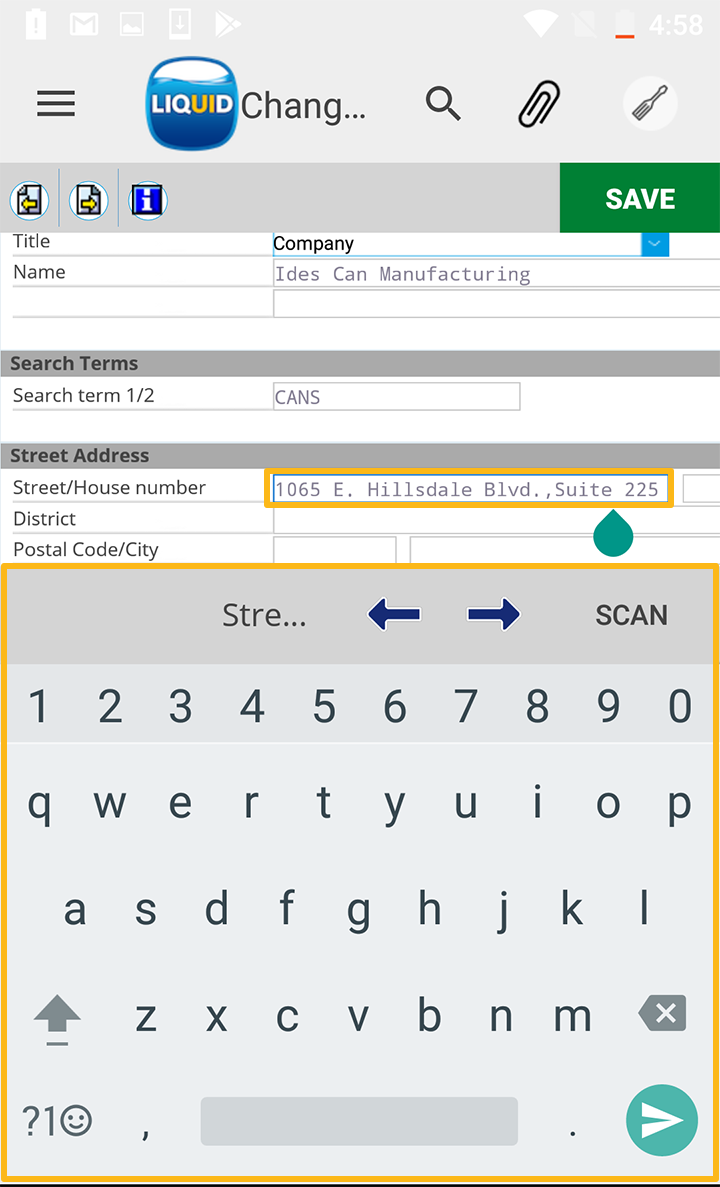Purpose
Liquid UI for Android supports barcode scanning using a built-in camera or a third- party device like Linea Pro. It enables you to populate the data on any SAP Input Field with a single click. It supports both: 1D and 2D barcode scanning. Furthermore, edit the scanned data or program an action after scanning to trigger events like auto-populate, auto-enter, or auto-tabbing.
For instance, auto-populate PO Number, Line Item, and Quantity fields for your PO Receipts process with a single barcode scan – removing data entry errors and enabling automated data capture.
It is a rule-based barcode integration where you can configure barcode scanner based on the selected barcode type in your App.
- Rule 1:You can add or remove prefixes and suffixes from the scanned value based on a barcode type.
- Rule 2: You can program scanned data to trigger actions like auto-populate or auto-enter after scanning data.
- Rule 3: The default configuration is applied to all the barcode scans if the rule-based on barcode type is not defined.
- Rule 4:You can also determine actions like scan, done, tab, or return later, at the time of barcode scanning.

Note: The app provides advanced rule-based barcode integration where you can either pre-configure the barcode scanner from the Main Menu or determine action after each barcode scan.
- Minimum Requirements
- Supporting barcode formats
- Pre-configuring barcode scanner
- Scanning 1D barcode
- Scanning 2D barcode
Minimum Requirements
- This feature requires an active Liquid UI for Android licenses. (Click here to know more about Liquid UI for Android licensing.)
Supporting barcode formats

Note: Barcode Configuration works only with a Built-in Camera.
-
Using the built-in camera: Liquid UI supports the following barcode types when you use the built-in camera;
- Code 39, Code 93, Code 128, DataBar, DataBar Expanded, EAN-8, EAN-13, Interleaved 2 of 5, QR Code, UPC-A, and UPC-E
-
Using a third-party scanner: Liquid UI also supports the following barcode types when you use a third-party scanner like;
- Linea Pro 4, Aztec code, Code 11, Code 39, Code 93, Code 128, Codebar, Data Matrix, EAN 8, EAN 13, UCC/EAN 128, UPC A, UPC E, UPC E1, GS1, IATA, ISBN, ISMN, ISSN, Industrial 2 of 5, Interleaved 2 of 5, Matrix 2 to 5, Maxi code, MicroPDF417, Micro QR code, MSI/Plessey, UK/Plessey, PDF417, QR code, RSS 14, RSS Limited, RSS-Expanded, S-code, and Telepen
Pre-configuring barcode scanner
Liquid UI for Android supports full native scanner configuration capability, which enables you to perform the following functions, based on your requirement.
- Add new Barcode types
- Edit default Barcode types
- Add prefixes under Barcode types
- Add suffixes under Barcode types
- Swipe to the left on the selected list item to delete. Default element will not be deleted from the screen. Select Delete option and the listed item would be removed from the screen.
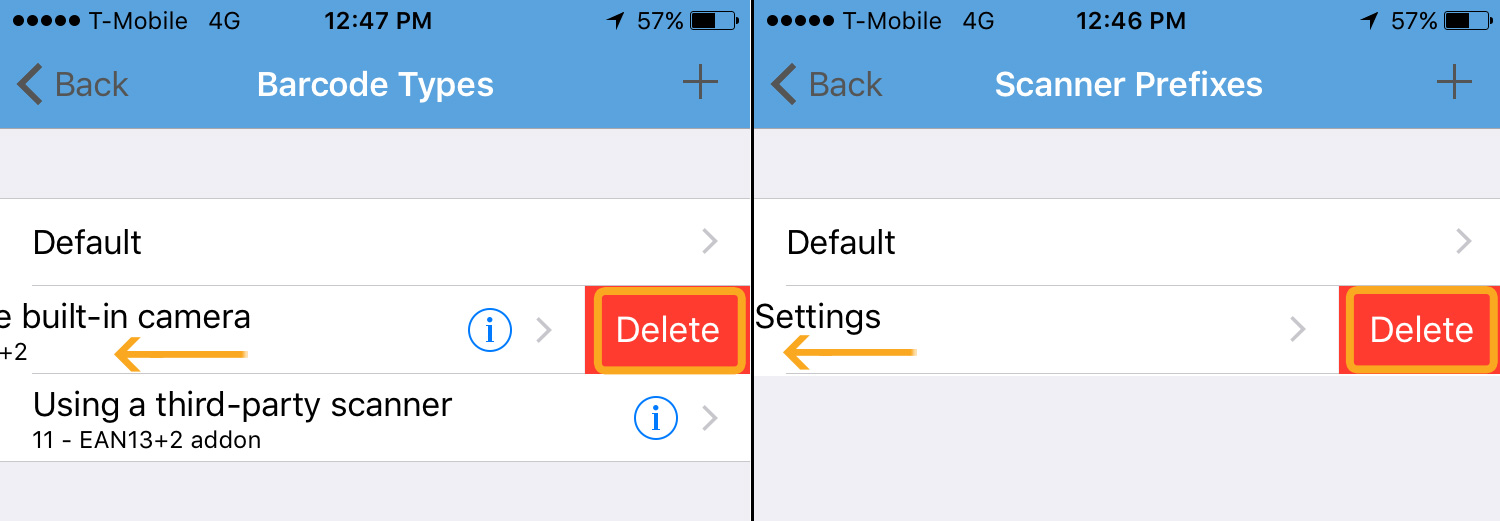
Scanning 1D barcode
The Liquid UI SCAN feature eliminates manual data entries by populating the detail through the barcode. The barcode scan enables Android users to select the SCAN option on any SAP Input Field with just a single click. The user can also edit the scanned field by placing the cursor on the Input Field. To demonstrate this, we’ll walk you through the following:
- The Liquid UI SCAN feature eliminates manual data entry by populating the detail through the barcode. The user can edit the scanned field by placing the cursor on the Input Field. To scan the barcode, open Liquid UI for Android App and navigate to any SAP transaction. For example, we have navigated to the MM03 transaction in the following image.
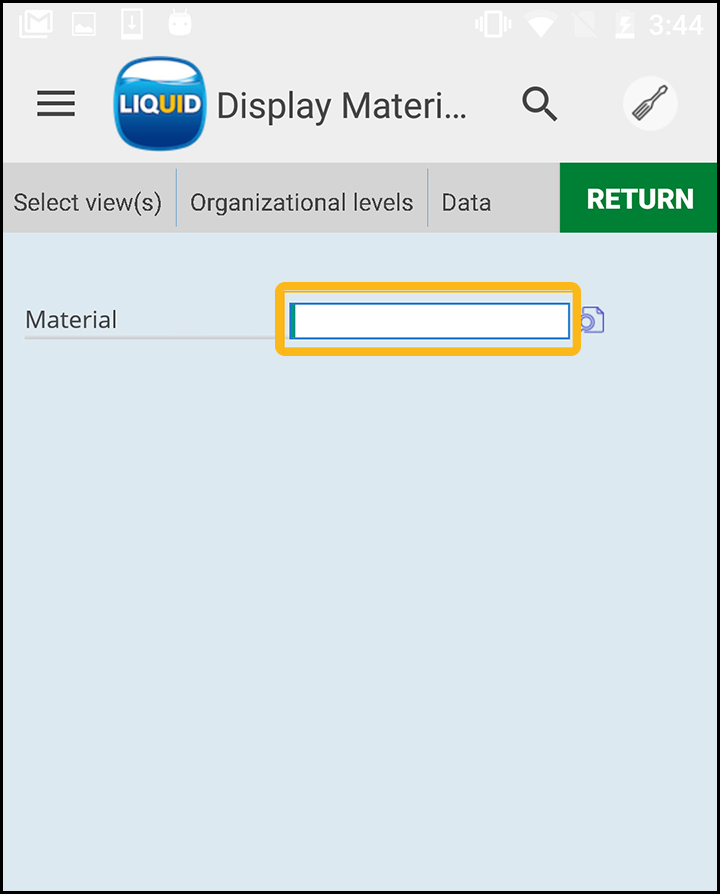
- A single click on the Input Field enables you to use all the available options for that Input Field. You can also perform a long press on the Input Field to find the scan option, as shown in the image below.
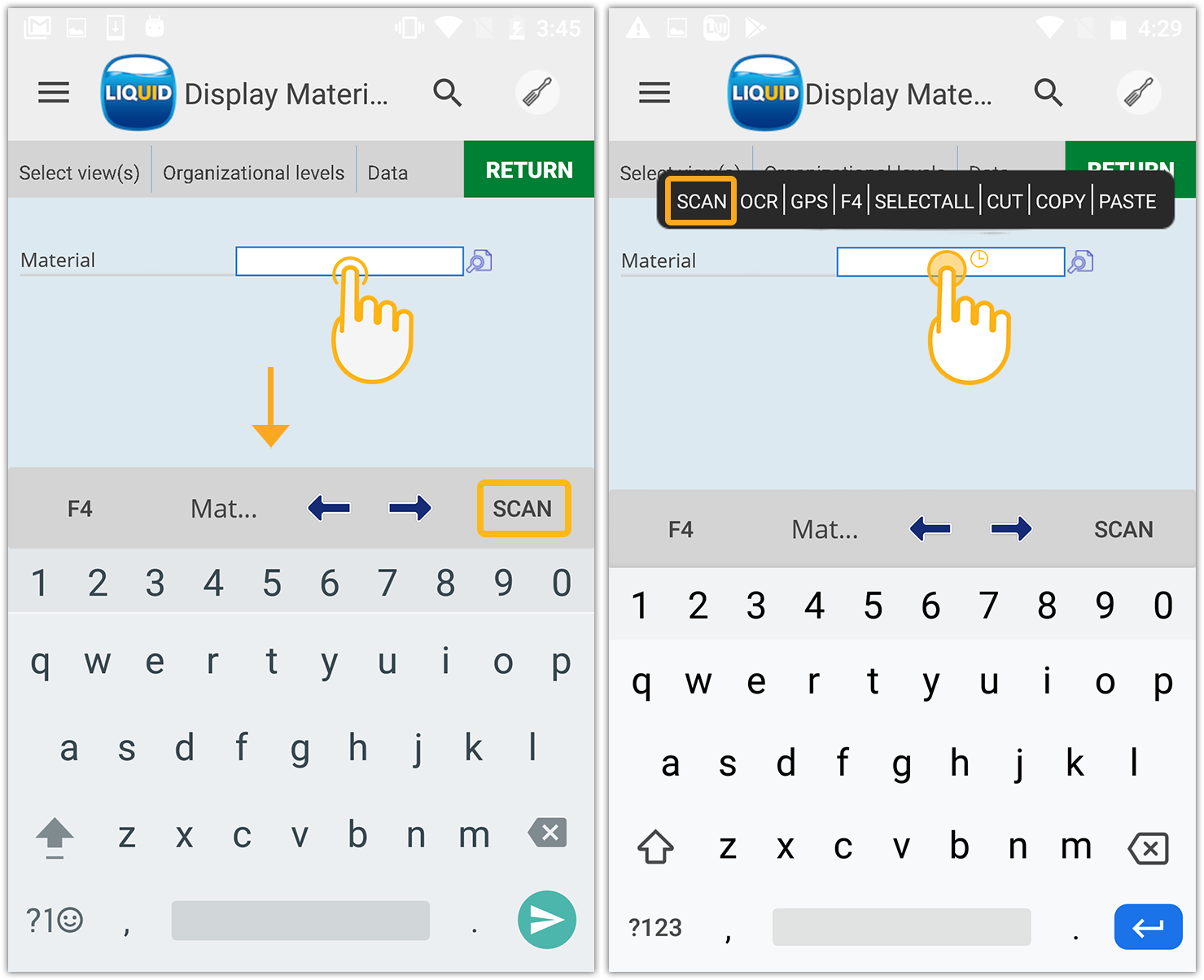
- Select the SCAN option to scan the barcode, and then read the value into the desired Input Field.
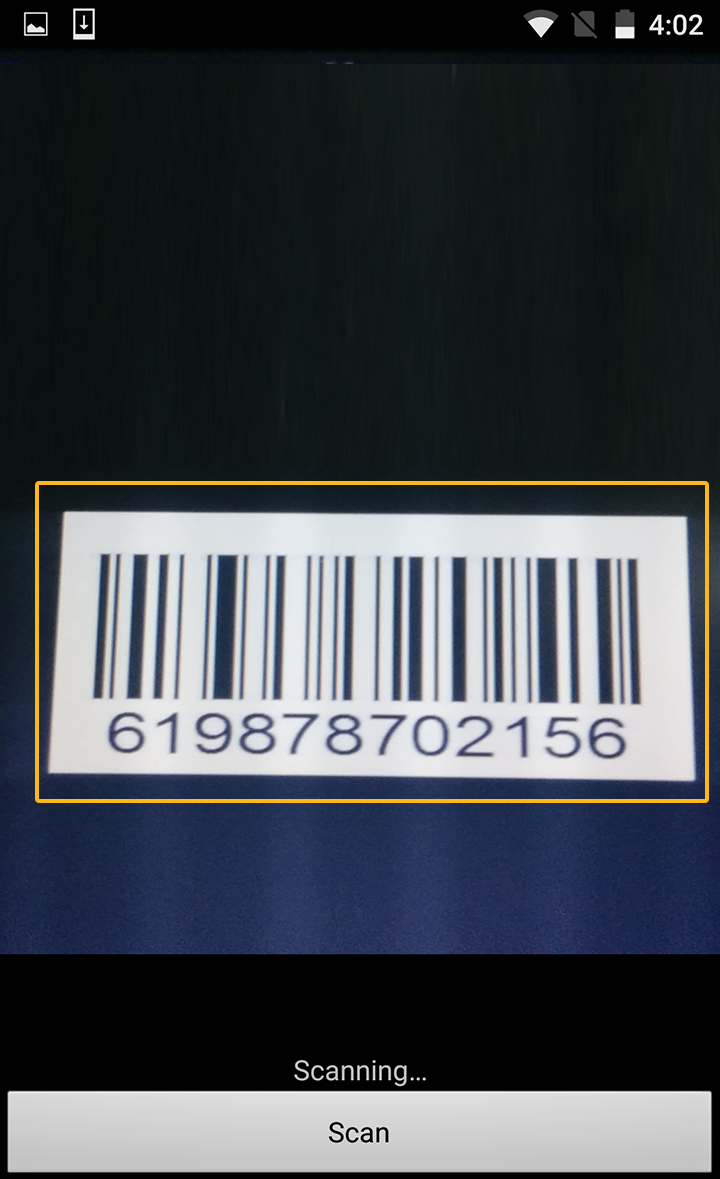
- Once scanned, the value appears on the screen with four options Return, Tab, Scan, and Done, as shown in the image below.
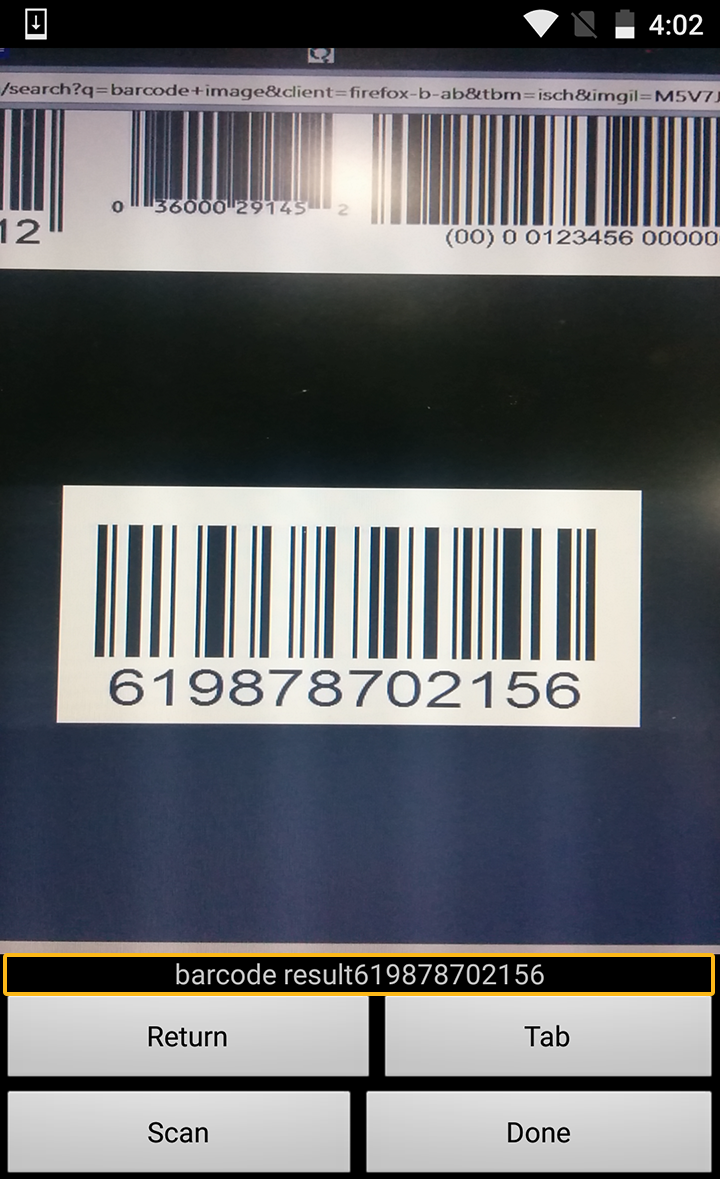
- Return: This button performs the function of an Auto-Enter that is usually performed on SAPGUI.
- Tab: This button performs the function of an Auto-Tab that is usually performed on SAPGUI.
- Scan: This button can be used to rescan the barcode/QR code.
- Done: This button is used to populate the Input Field with the value of the scanned code into the Input Field.
- Click on the Done option to finish the scanning and read the scanned value into the Input Field as shown in the image below:
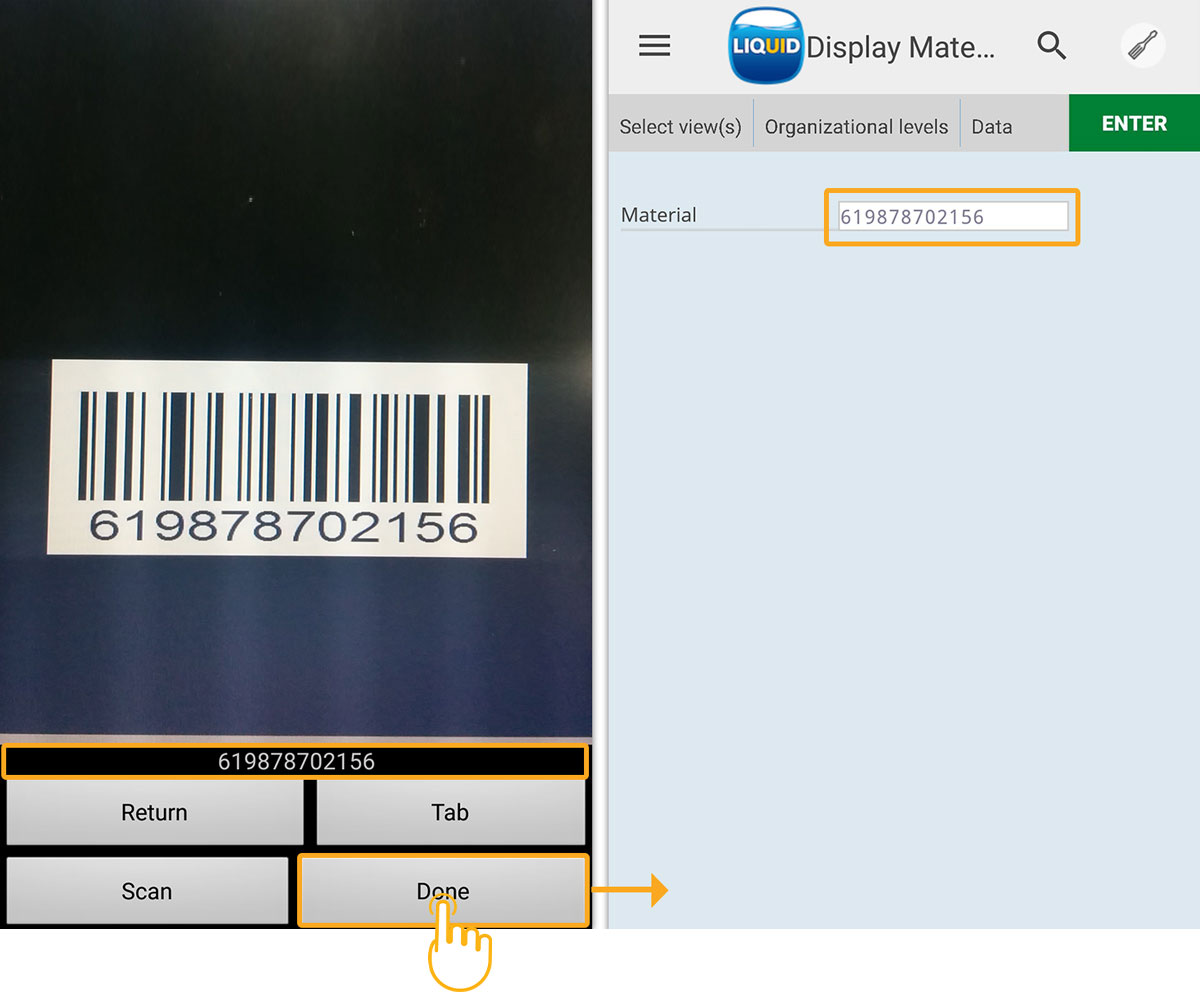
- To edit the scanned field, place the cursor on the Input Field, and if required, edit the field with the device's keyboard manually.
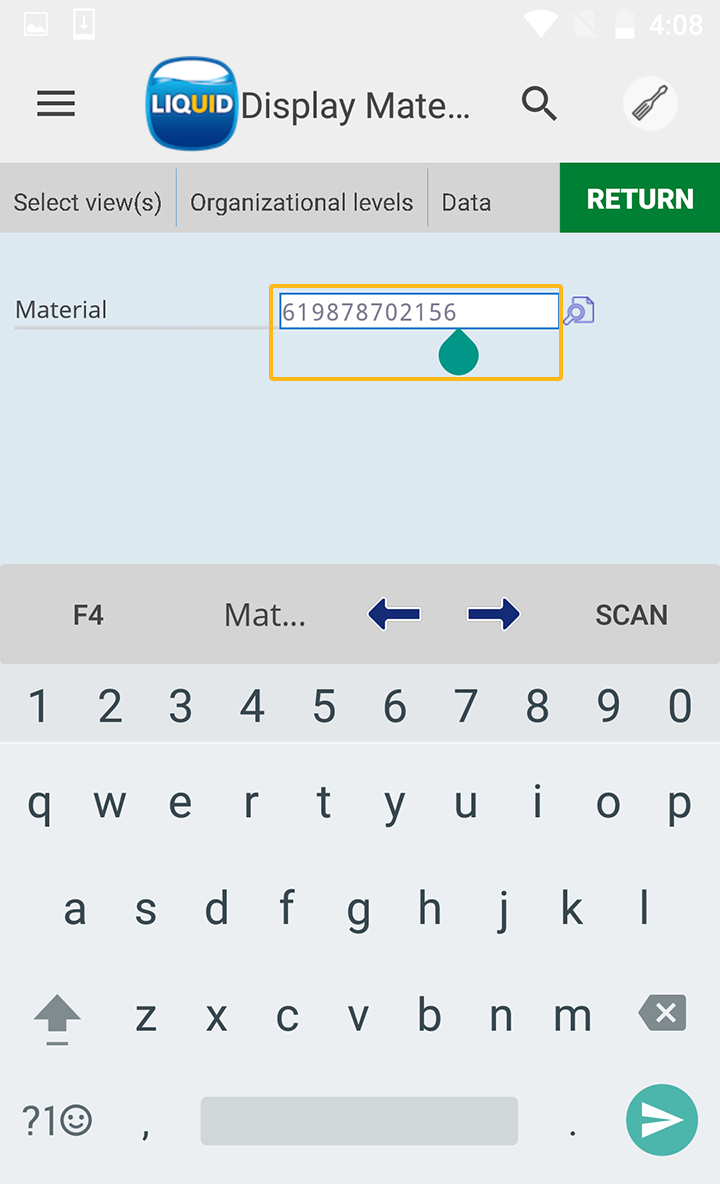
Scanning 2D barcode
The 2D barcode scan contains multiple rows of data, i.e. data in the form of a block. In this case, the user needs to create a rule to extract data for a specific field from the scanned data. However, the 2D data input can be used in a single field similar to 1D scan. To scan the barcode, open the Liquid UI for Android App and navigate to any SAP transaction.
To demonstrate this, we are considering the XK02 transaction in the following scenario.
- Navigate to the XK02 transaction and enter the value for the Vendor Input Field, and then select the Address checkbox from General data and click return.
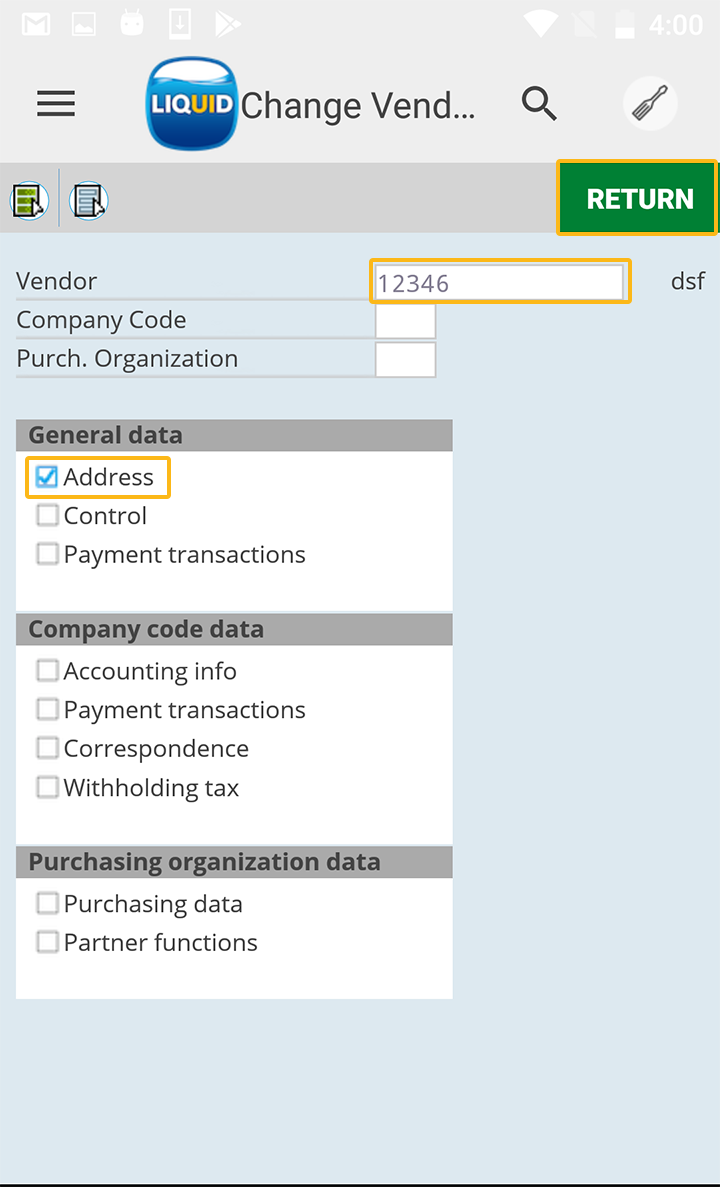
- Then you will be navigated to the Change Vendor Address screen. Just do a single tap on the Input Field to view the SCAN option.
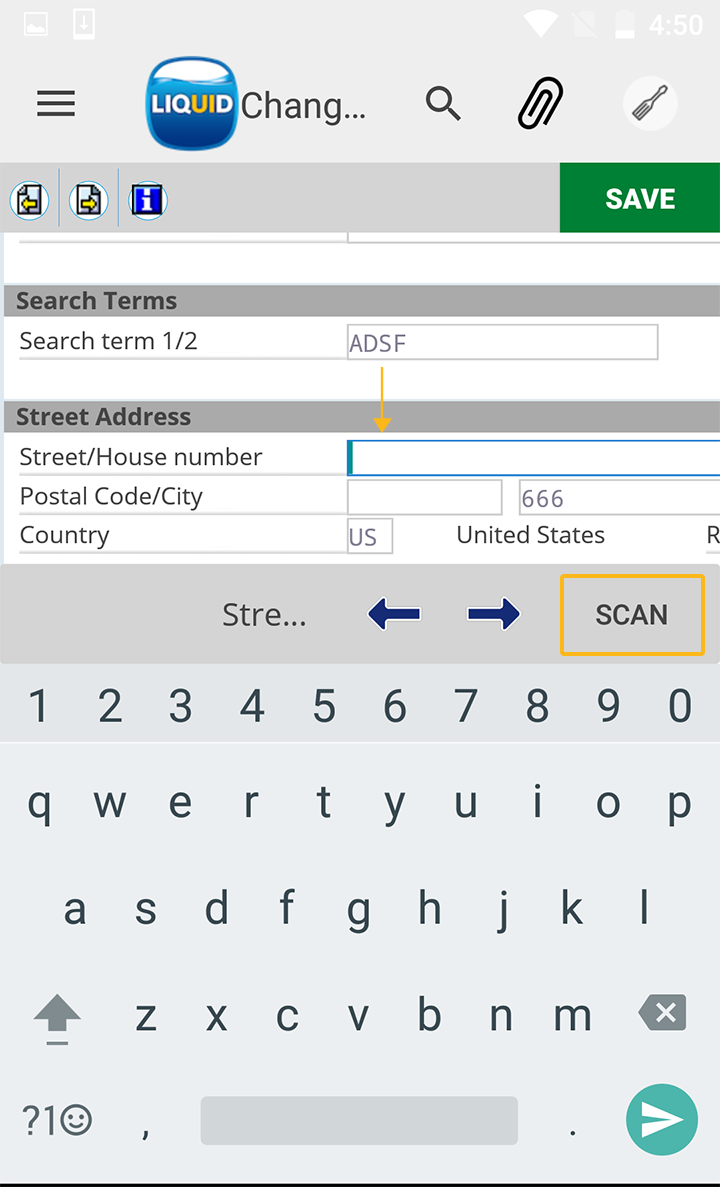
- Here, we have clicked on the Vendor address to retrieve the Vendor address through scanning. Click the SCAN option to scan either 1D or 2D barcodes.
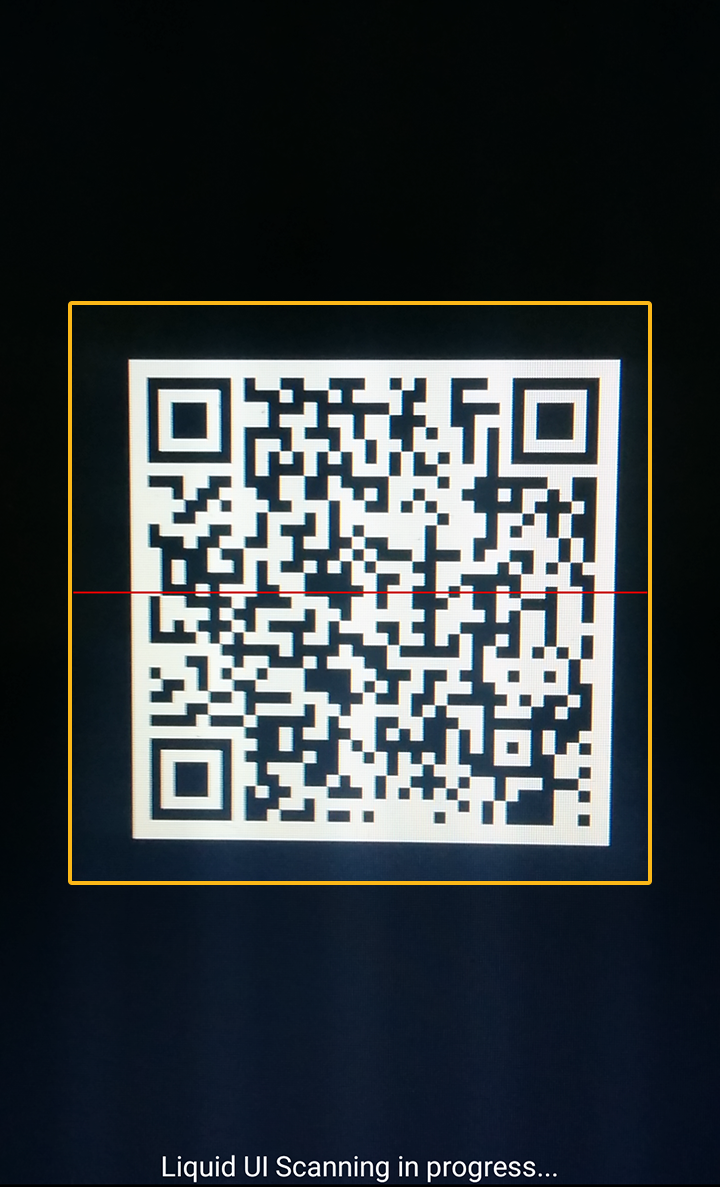
- Once the barcode is scanned, it displays the values on the screen before populating them into the desired Input Fields. Click on the Done option to finish the scanning. Then, the scanned value is read into the Input Field, as shown below:
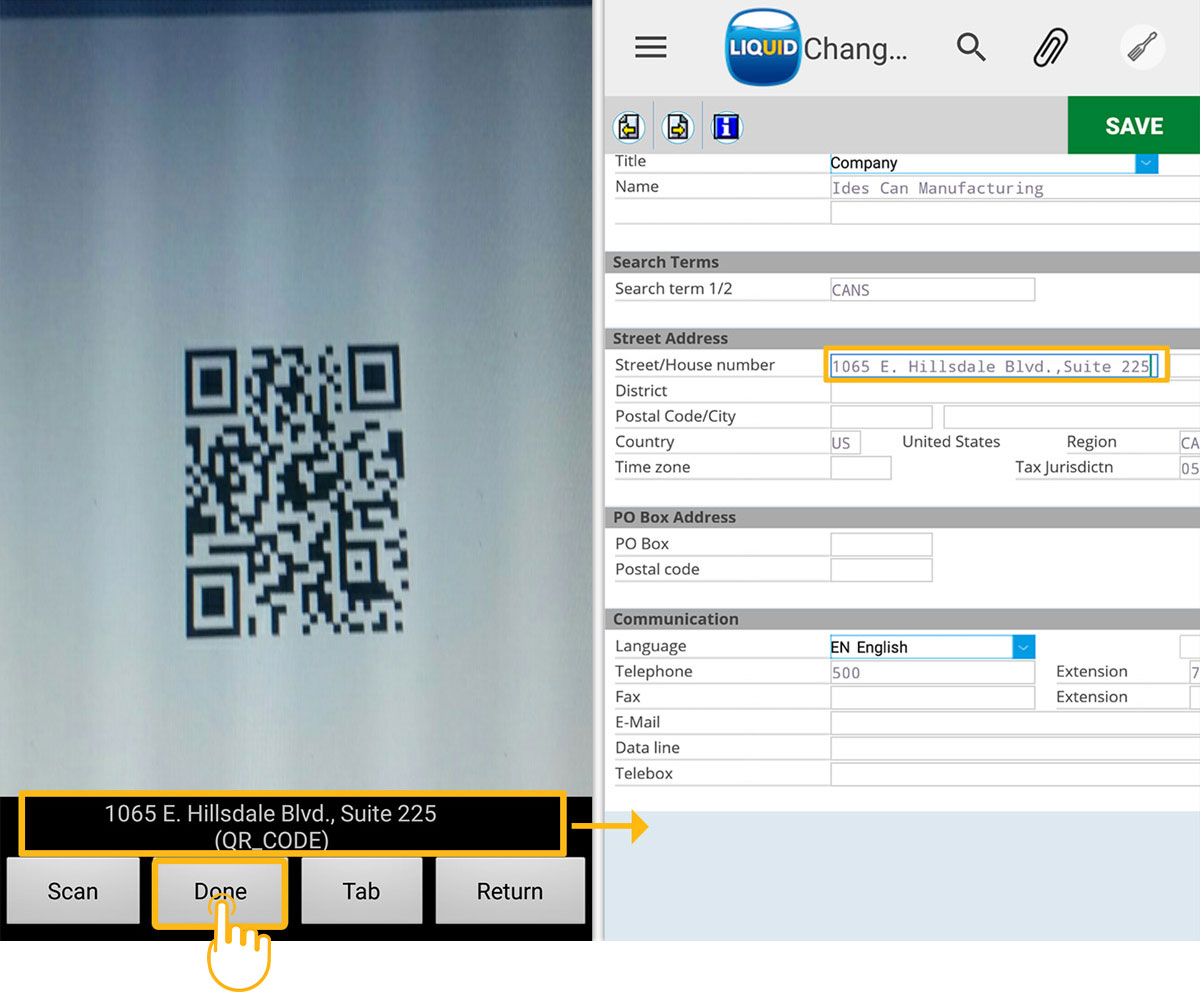
- To edit the scanned field, place the cursor on the Input Field, and if required, edit the field with the device's keyboard manually.
